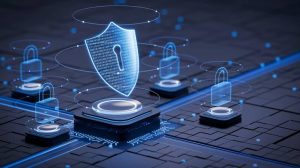Hackers aren’t playing games. From sneaky malware to full-on digital warfare, here’s why cybersecurity is everyone’s business now.

Let’s paint a picture: You’re running a multi-million-dollar business in a top-tier country with state-of-the-art technology, encrypted servers, and a world-class IT team. You feel secure. Until one afternoon, a suspicious email gets opened… and within minutes, sensitive files are locked, customer data is compromised, and your operations are frozen.
That’s the brutal reality of modern cyber threats. No system is untouchable, no company too big, and no firewall too fancy to stop a determined cybercriminal.
WHAT IS GOING WRONG?
Cybersecurity threats have evolved from simple virus pop-ups in the early 2000s to full-blown digital warfare. In top-tier nations where government data, financial records, health systems, and critical infrastructure are deeply digitized, the stakes are higher than ever.
Ransomware attacks can paralyze hospitals, airlines, and even entire cities (remember the Colonial Pipeline hack in the U.S.?).
Nation-state cyber espionage targets defense, intelligence, and innovation sectors.
Phishing scams have become frighteningly sophisticated—sometimes indistinguishable from real communication.
Zero-day vulnerabilities are exploited faster than they can be patched.
And the worst part? These attacks often succeed not because systems fail, but because humans click things they shouldn’t.
The Human Cost of a Breach
It’s not just about lost files. The consequences of a cyberattack are wide-reaching:
Financial loss in the millions or billions
Reputational damage that takes years to rebuild.
Legal consequences due to data privacy violations (hello, GDPR fines)
National security risks if sensitive government or military data is leaked
Job losses due to company closure or downsizing after a breach
For individuals, it could mean identity theft, stolen savings, or exposure of personal medical records. This is no longer a “tech issue”—it’s a people problem.

Why Top-Tier Countries Are Prime Targets
You’d think that with advanced infrastructure, these nations would be safer. Ironically, the opposite is true. Their dependence on digital systems makes them juicier targets. More data, more digital transactions, more internet-connected devices—more ways to break in.
It’s like building the tallest, shiniest glass house and assuming no one will throw a rock.
What’s the Solution? Smarter, Collaborative Cyber Defense
Here’s what needs to happen—not just in theory, but in practice:
🔹 1. AI-Powered Cybersecurity Systems
Artificial Intelligence isn’t just for chatbots—it can detect patterns, flag anomalies, and respond to threats faster than any human could. With AI-driven firewalls, behavior-based alerts, and intelligent forensics, organizations can identify and stop threats before they spread.
🔹 2. Zero Trust Frameworks
We’ve talked about this before: never trust, always verify. Implementing Zero Trust Architecture (ZTA) means no device or user is trusted by default—even if they’re already inside your network.
🔹 3. Cybersecurity Education
Humans remain the weakest link. Businesses and governments must invest in awareness training—teaching employees how to spot phishing attempts, avoid risky behaviors, and report suspicious activity early.
> Pro tip: “If it smells phishy, don’t click it.”
🔹 4. International Collaboration
Cybercrime is borderless. It’s time governments start acting like it. Global cooperation on threat intelligence, real-time data sharing, and coordinated responses will be essential to neutralize large-scale cyber attacks.
Conclusion
Security is Not a Luxury—It’s a Necessity
In a world where one weak password can take down an entire corporation, cybersecurity is no longer optional. It’s foundational.
Top-tier countries must lead by example: securing their infrastructure, empowering their people, and building digital systems that are resilient, intelligent, and built with zero trust but maximum caution.
Because in today’s digital age, it’s not about if you’ll be attacked—but when. And how well you’re prepared to bounce back.